
Ebony Jewelwing
July 28th, 2011
Sugarbush Loop is becoming one of my favorite hiking spots. Foremost of the reasons for this is its population of Ebony Jewelwings, a magnificent odonate. When you first see one fluttering around, it looks like a dark butterfly. Then it perches, revealing its vivid metallic blue-green body and its eponymous delicate ebony wings. Jewelwings prefer wooded streams and creeks, which is perhaps why they're not a common sight in Ottawa--our greenspace has a lot more marsh and pond than it does fast-flowing water. But in appropriate habitat, they occur in good numbers.
I was delighted to find one hunting for food on Chelsea Creek. He perched on grasses leaning over the water, and periodically sallied forth to snap up insects from the surface. He had a habit of returning to exactly the same position on exactly the same perch after one of his sallies, which was fortunate for me! Once I'd set the focus on my lens, it stayed good for some time.

1680x1050 wallpaper
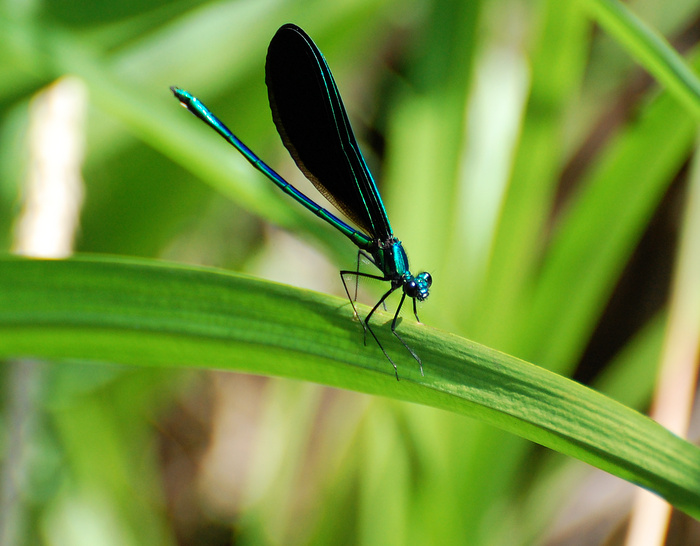
1680x1050 wallpaper
The females and juveniles are duller-colored, and have pale spots on the tips of their wings. My favorite female picture of the day is this rather startling flight shot.

A Selection Of Odes
July 21st, 2011
No, not poetry. "Odes" is shorthand for odonates: dragonflies and damselflies. Here are some I've come across recently.
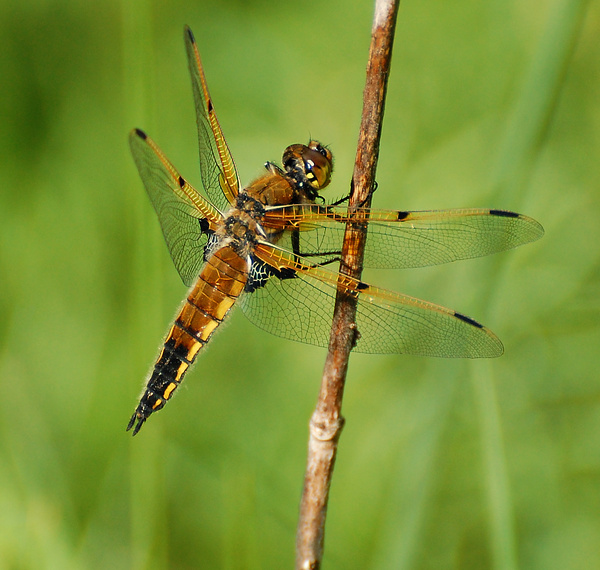
Four-Spotted Skimmer (wallpaper available)

Mosaic Darner (wallpaper available)
( More )
Cooper's Hawk
July 18th, 2011
Cooper's Hawks have nested in the tall pines at Mud Lake for a few years now. These long-tailed raptors are voracious consumer of songbirds. The Mud Lake pair also seem to enjoy, and have helped temper, its bountiful squirrel population! Before the hawks took up residence, squirrels used to follow hikers down paths looking for handouts, or come out when you were sitting on the platform and just stare at you. The Black Squirrel Mafia, I called them. They've since learned to make themselves a little less conspicuous.
This Cooper's, judging by eye color, is a young'un--likely fledged from this year's nest.

1680x1050 wallpaper
Eastern Kingbird
July 17th, 2011
Eastern Kingbirds are common throughout Ottawa, but Mer Bleue is an especially good place to watch and photograph them. They perch on the boardwalk and make flycatching sallies over the bog.

1680x1050 wallpaper
Hexagenia Limbata
July 16th, 2011
...which is to say, a mayfly. I like mayflies--both the pale waxy subimagos that cling to windows in spring, and the colorful adults.

Blue Mud Dauber
July 14th, 2011
I'm still enough of a novice at insect-watching that things can take me completely by surprise. Example: I had no idea we had metallic blue wasps in Ottawa! This one caught my eye at Mud Lake while I was watching the heron struggle with his lunch.
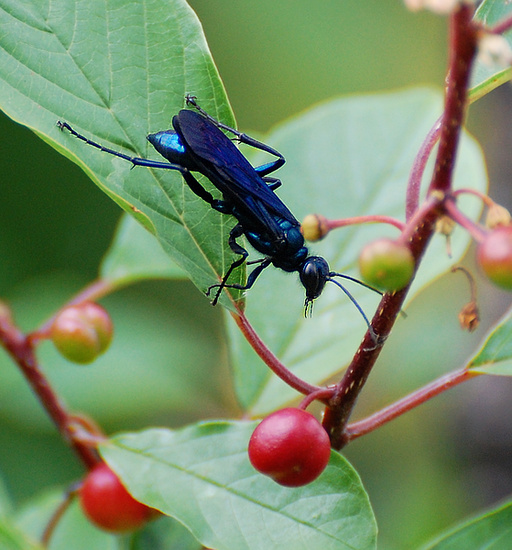
Many thanks to the folks at What's That Bug for their help. I was disappointed that it didn't turn out to be the badass-sounding Steel Blue Cricket Hunter--that is, until I learned that the Blue Mud Dauber is far more badass. Its favorite prey is Black Widow spiders! The adult actually lives on nectar, but captures and kills spiders to feed its young. As there aren't many (any?) Black Widows in Ottawa, I'm guessing this wasp is not particularly common either.
The second photo shows off the violet highlights in the wings:

Biting off more than he can chew
July 12th, 2011

This Great Blue Heron looked mighty proud of himself having caught a large catfish...until it occurred to him that he was going to have to swallow it. I watched him struggle with the thing for upward of fifteen minutes.
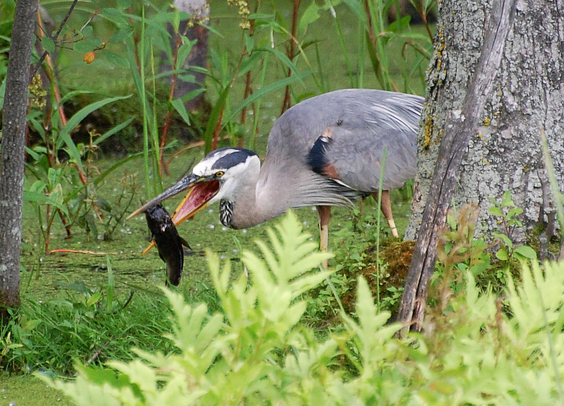
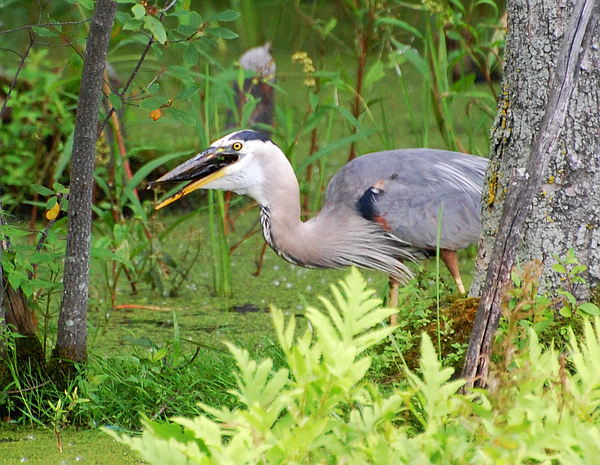
The final picture looks like success but wasn't--it managed to flop its way back out of his mouth! When I left he had the thing sitting on shore, apparently waiting for it to die so it would go down without a fight.
Bitter Nightshade
July 7th, 2011
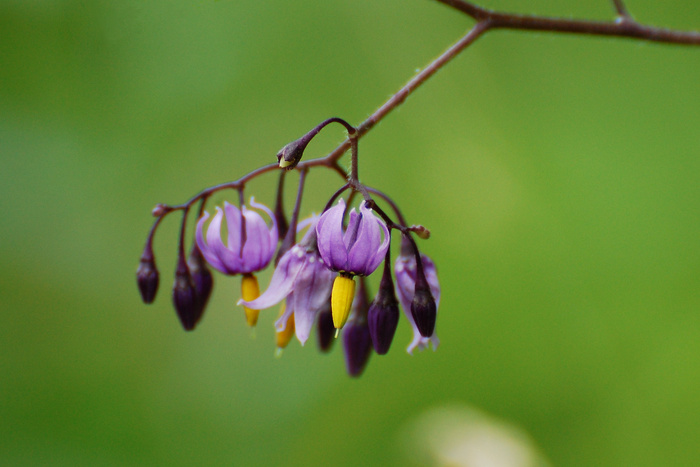
1680x1050 wallpaper
One of my favorite wildflowers. Look for these little purple and yellow beauties on vines intertwined with other plants. Later in the year, the flower clusters turn into berry clusters. The berries are poisonous to mammals, but birds eat them without harm.
Okanagan Vacation 15 - Departure
July 2nd, 2011
There was a beautiful sunrise on our way to the airport.
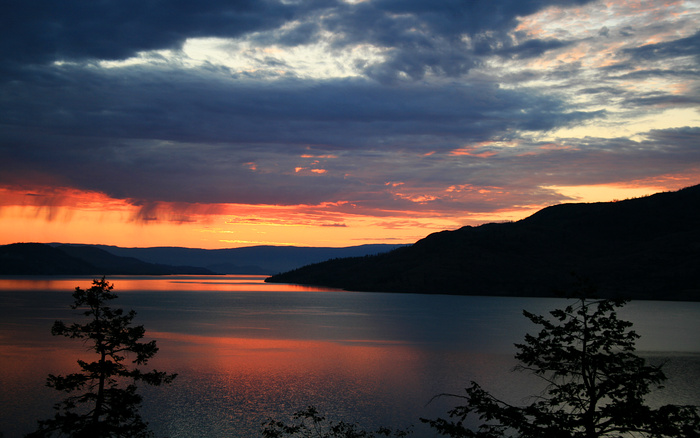
Photo by Michael Britton, wallpaper available
This concludes my photo tour of the Okanagan! The permanent gallery for all my best pictures from this trip is here. This does not include photos taken by my husband, which are stored here instead.
Triplist: 98 bird species including 40 lifers, plus 4 species heard only. Details below the cut.
( In here )
Okanagan Vacation 14 - Chute Lake
July 1st, 2011
Our final outing took us up to Chute Lake resort, where I was pleased to find a well-patronized set of bird feeders. One of the patrons was a Steller's Jay. The feeders themselves were hidden behind greenery, but I could catch him on camera as he perched on the lodge waiting his turn.
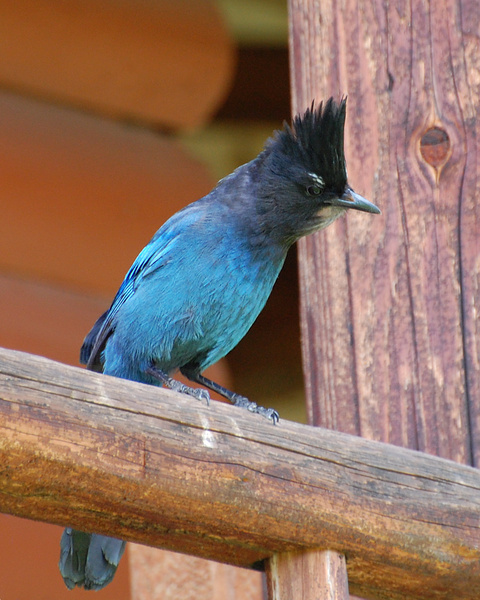
1680x1050 wallpaper
The woods along Chute Lake Road had been severely burned by forest fire in 2003. This was to thank for one of my lifers of the trip--a bird which, believe it or not, considers burned woods to be ideal habitat! Olive-Sided Flycatchers like open areas with abundant dead trees. They use the dead trees as hunting perches, and the openness of the habitat means they can easily see the flying insects on which they prey.
There are a number of "fire follower" species, a few of whom would even go extinct if humans successfully suppressed all forest fires (and didn't do planned burns.) The Kirtland's Warbler requires stands of young Jack Pine for nesting. Jack Pine cones open and release their seeds only when the resin that seals them shut is melted by intense heat--say, heat from a forest fire. Without fire, the Kirtland's Warbler's habitat disappears. There are only a few thousand of them left in the world.
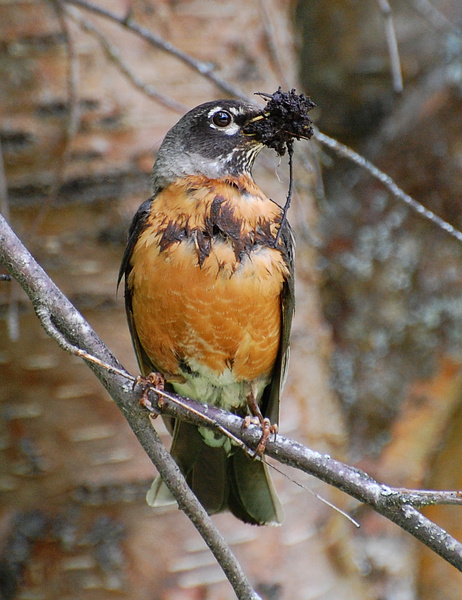
There's a story behind this robin. You could call her "the Varied Thrush that wasn't." Varied Thrush is a unique species of western Canada that looks somewhat like a robin with a dark band across the breast. So when Mike said he'd seen a robin with a breast band, I perked up instantly.
But when I saw the bird for myself, what I saw was indubitably a robin...she had the calls of a robin, the eye ring of a robin (as opposed to the Varied Thrush's orange eye stripe), and the tameness of a robin. She blithely disregarded us as she flew back and forth building her nest on a low pine branch. I was forced to conclude that the dark breast band which had gotten me so excited was either an aberration or (as occurs to me now) it was mud--she had simply dirtied herself up in the process of nest-building.
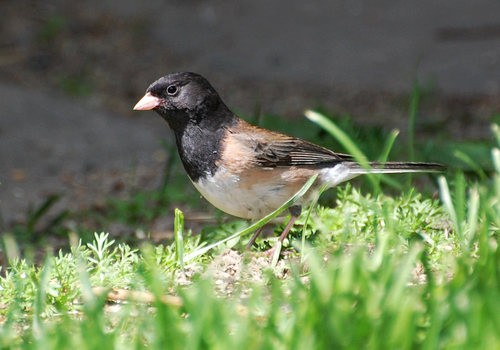
The Oregon Juncos foraging below the resort feeders were somewhat more amenable to the camera than the ones on Mount Kobau had been.
There was a hummingbird feeder at the resort as well, and it was thanks to that I got my 40th and final lifer of the trip: an eensy-weensy Rufous Hummingbird.
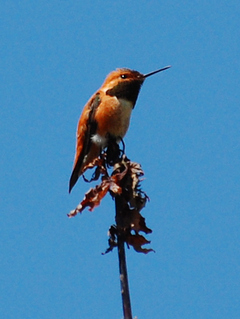
|
